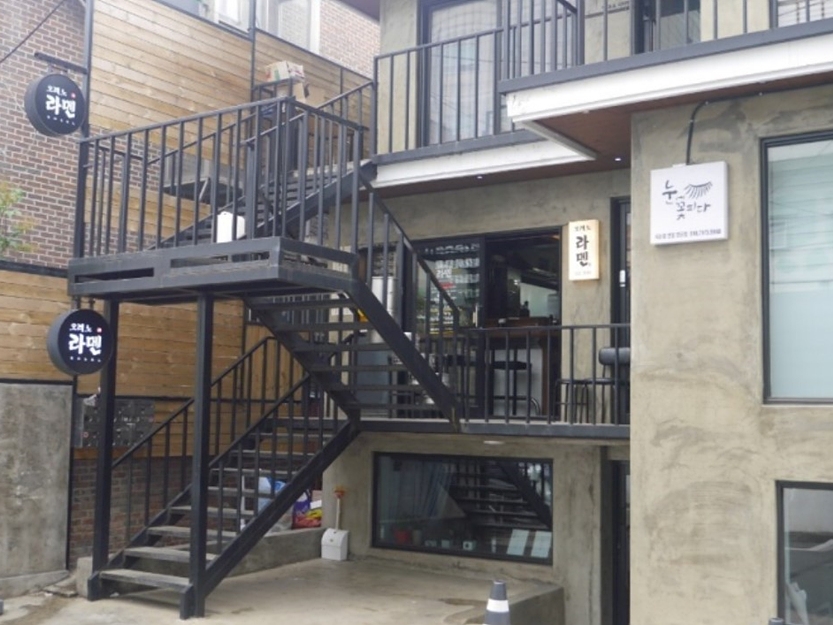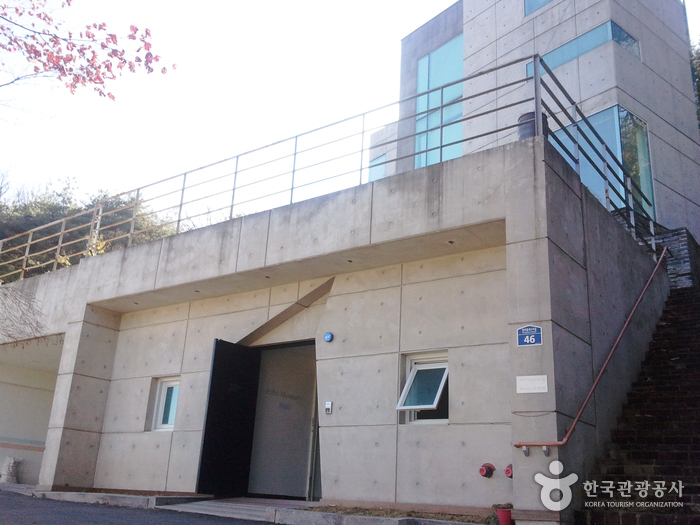Orenoramen Main Store (오레노라멘 본점)
6.1Km 2024-02-22
14 Dongmak-ro 6-gil, Mapo-gu, Seoul
Orenoramen is a popular ramen spot near Hapjeong Station. Their signature dish is the toripaitan ramen (chicken broth ramen), featuring a rich broth made from chicken and chewy noodles. Additionally, their karapaitan ramen (spicy chicken broth ramen), which adds a spicy kick to the flavor, is also a popular choice. Customers can also enjoy additional toppings such as char siu and eggs with their ramen.
Zaha Museum (자하미술관)
6.1Km 2021-03-09
46, Changuimun-ro 5ga-gil, Jongno-gu, Seoul
+82-2-395-3222
Located in Buam-dong, Jongno-gu, Zaha Museum is the highest art gallery in Seoul. Reaching
the museum involves a bit of an uphill walk, but the breathtaking scenery that includes Bugaksan Mountain and Inwangsan Mountain makes it worth the effort.
Opened on March 1, 2008, the two-story museum exhibits experimental works of young artists. There are two exhibition halls and a small garden on the second floor with a great view of the mountains.
GS25 - Nogosan Main Branch [Tax Refund Shop] (GS25노고산본점)
6.1Km 2024-06-26
8 Sinchon-ro 16-gil, Mapo-gu, Seoul
-
Nature Collection - Sinchon Branch [Tax Refund Shop] (네이처컬렉션 신촌)
6.1Km 2024-04-18
14, Yonsei-ro, Seodaemun-gu, Seoul
-
Cheongdamdong Pojangmacha (청담동포장마차)
6.1Km 2024-03-07
25, Yonsei-ro 4-gil, Seodaemun-gu, Seoul
+82-2-363-4377
Cheongdamdong Pojangmacha hearkens to the idea of a pojangmacha, street food carts that often offer snacks and alcoholic beverages. During the daytime, Cheongdamdong Pojangmacha offers meals like chueogui dosirak (mon’s lunch box). In the evening, the restaurant’s snack menu with nearly 50 dishes is opened to the visitors. One can, for instance, find dak bokkeumtang (spicy braised chicken), cheese gyeran mari (rolled omelet with cheese), tteokbokki, manduguk (mandu soup), odolppyeo (pork belly cartilage), yukhoe (beef tartare) at affordable prices.
Seodaemun Independence Park (서대문독립공원)
6.1Km 2022-12-15
251, Tongil-ro, Seodaemun-gu, Seoul
+82-2-3140-8305
Seodaemun Independence Park was built on the former Seoul Detention Camp. It was used to imprison thousands of Korean independence activists until the liberation from the Japanese occupation on August 15, 1945, as well as the political prisoners during the political turmoil in the 1960s. When the prison was moved to Uiwang-si, Gyeonggi-do in November 1987, the area was restored and turned into a memorial park in August 15, 1992 to honor the sacrifices of the martyrs. The park preserves seven prison buildings, an execution ground, underground women’s prison, and the March 1st Movement Monument that has been moved from Tapgol Park in Jongno.
One of the most significant monuments of the Seodaemun Independence Park is Dongnimmun Gate (Independence Gate), which has been designated a Historic Site. Nearby is Dongnipgwan (Independence Hall), originally called Mohwagwan, which was used to greet Chinese envoys during the Joseon dynasty. Today, the hall enshrines 2,327 tablets inscribed with the names of Koreans who died for the cause of national independence. Standing right next to Dongnimmun Gate are the remnants of Yeongeunmun Gate, another Historic Site. Other sights inside the park include the Patriotic Martyr Monument, Declaration of Independence Monument, and Statue of Dr. Seo Jae-pil, who was an independence activist and publisher of Korea’s first independent newspaper. The main highlight of the park is the Seodaemun Prison History Hall, a former prison building that was renovated into a history museum.
![Wonder Place [Tax Refund Shop] (원더플레이스)](http://tong.visitkorea.or.kr/cms/resource/81/3314681_image2_1.jpg)
![Tandy [Tax Refund Shop] (탠디)](http://tong.visitkorea.or.kr/cms/resource/18/3314418_image2_1.jpg)
![Ziozia [Tax Refund Shop] (지오지아)](http://tong.visitkorea.or.kr/cms/resource/59/3313259_image2_1.jpg)



![Nature Collection - Sinchon Branch [Tax Refund Shop] (네이처컬렉션 신촌)](http://tong.visitkorea.or.kr/cms/resource/87/2878287_image2_1.jpg)

![Well [Tax Refund Shop] (웰빙할인마트)](http://tong.visitkorea.or.kr/cms/resource/81/2891181_image2_1.jpg)
 English
English
 한국어
한국어 日本語
日本語 中文(简体)
中文(简体) Deutsch
Deutsch Français
Français Español
Español Русский
Русский